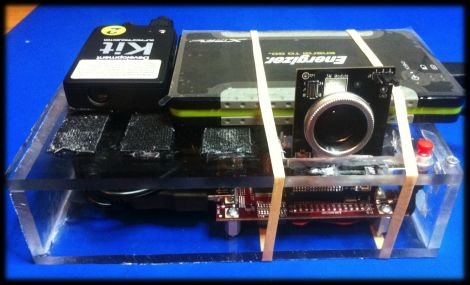
One of [Tom’s] friends is celebrating a birthday soon, and he was asked to make a mini golf hole for the event. While most people would expect to bring beer or guac to the shindig, he saw this as an opportunity to bring a little bit of Portal to life.
Near the end of the first Portal game, you are forced to pitch your companion cube into the incinerator, a scene which [Tom] thought would be the perfect mini golf hole. He started out by building an iris door mechanism, which he surrounded with chicken wire and some plaster, producing a fantastic-looking waste disposal pipe.
He added a ramp that leads up to the hole, then [Tom] got busy with the electronics portion of the fixture. Once the portal button at the end of the ramp is pressed, an Arduno triggers a pair of motors to open the waste disposal door and fire up a smoke machine. The result, as you can see in the video below, is nothing short of awesome.
[Tom] says he’s in the process of building a pair of turrets and a working golf ball portal as well, so if you’re a big Portal fan, be sure to check out his site for updates.










Recent Comments